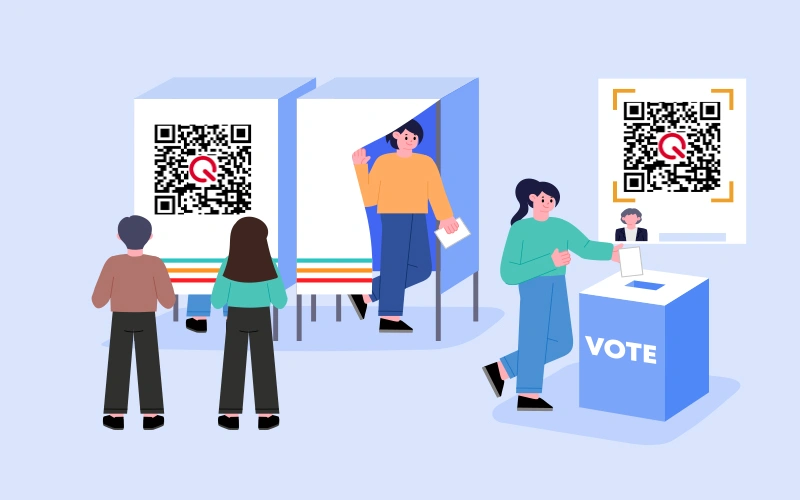
QR Codes in Government Elections
The integration of QR codes into government elections holds significant potential for bolstering election security and improving the voting experience. These versatile codes can be leveraged for voter registration, secure voting systems, and campaign activities, all while addressing challenges in election integrity.
Key Takeaways
- Enhanced Security Measures
- QR codes provide a verifiable way to ensure votes are accurately recorded.
- They allow for secure voter authentication and protect against tampering or fraud.
- By embedding QR codes in ballot systems, election officials can add an additional layer of transparency and trust.
- Addressing Concerns
- While QR codes offer robust solutions, caution is necessary to avoid vulnerabilities like those seen in ballot barcodes.
- States like Colorado have proactively banned barcode voting due to security risks, highlighting the need for meticulous implementation.
- Applications in Campaigns and Elections
- Voter Registration: QR codes streamline the registration process, connecting voters directly to online registration platforms.
- Campaign Branding: Candidates use QR codes for sharing campaign platforms and materials.
- Donation Collection: QR codes enable quick and secure campaign donations, fostering transparency.
- Surveys and Polls: QR codes provide an accessible way for collecting voter opinions on issues and candidates.
Challenges and Opportunities
- E-Voting Systems: While convenient, they require robust cybersecurity measures to safeguard voter data.
- Public Trust: Educating voters about the safety and reliability of QR code systems is vital for widespread adoption.
- Regulatory Oversight: Government agencies must set stringent standards and regularly audit QR code-enabled systems to ensure compliance and integrity.
Conclusion
QR codes are emerging as a vital tool in modernizing government elections, offering solutions for secure voting, efficient campaign management, and increased voter engagement. By thoughtfully integrating this technology, election officials can enhance transparency, build trust, and uphold the integrity of democratic processes.